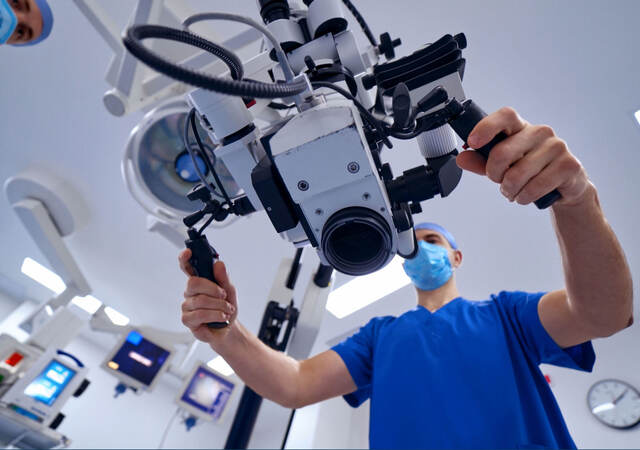July 20, 2023
By Frauke Schuurkamp, Wanling Xiong and Ken Yoshida
On June 22, 2023, several experts from our Human Factors Research & Design team delivered a detailed webinar on global HFE regulations and expectations for medical devices. This debrief will cover some of the content included with a focus on major standards in each location and country-specific requirements.
Key Global HFE Regulations
Key to a discussion of global HFE regulations is The International Electrotechnical Commission’s (IEC) HFE standard IEC 62366. This standard is recognized by many different regulatory agencies around the world and often serves as a starting point for countries aiming to develop their own HFE regulations. While there was an amendment in 2020, the most current “official” version was published in 2015. IEC 62366 includes two important documents:
-
IEC 62366-1 (2015). This is the international standard that describes the normative approach for applying HFE to medical devices in the context of risk management.
-
IEC 62366-2 (2016). An accompaniment to IEC 62355-1, this document describes in greater detail the “how” and the “why” of what is included in IEC 623366-1.
Additionally, the American National Standards Institute (ANSI) and The Association for the Advancement of Medical Instrumentation (AAMI) provide ANSI/AAMI HE75:2009 (R2018). This is technically a guidance, not a medical device standard, but it can help you make various human factors and design usability-related decisions. The next version is currently underway and will have sections devoted to usability testing and risk management.
The United States of America (USA) - FDA HFE principles applied to medical devices
Regulatory body: Food and Drug Administration (FDA)
HFE standards and guidance: FDA-authored standards
The FDA has several centers and offices, and medical device manufacturers will be most concerned with CDRH (Centre for Devices and Radiological Health) and CDER (Centre for Drug Evaluation and Research). While CDRH looks primarily at medical devices, CDER looks primarily at drug products. For drug-device combination products, the office that will oversee the submission depends on the primary mode of action, i.e., the main therapeutic component of the product. If the therapy is device-led, it will go to CDRH. If the therapy is drug-leg, it will go to CDER.
CDER and CDRH have both published several standard and guidance documents. There are some differences between their recommendations and requirements, including how the CDER defines critical tasks for human factors validation testing of combination products, user group breakdown and acceptance, knowledge task format, and the suggested outline of the final HFE report. Despite these differences, the HFE requirements are based on the same important principles: understanding users and use environments, formulating UI requirements, conducting a use-related risk analysis, and evaluating the product through formative and HF validation tests.
European Union (EU) - Compliance requirements for medical devices
Regulatory body: Notified Bodies (NBs) and the European Medicines Agency (EMA)
HFE standards and guidance: MDR and IEC-62366:2007
In the EU, the majority of Class I devices are subject to self-conformance assessments, whereas higher risk devices are subject to conformance assessments by a NB.
In the EU, manufacturers must demonstrate compliance with requirements set forth in the Medical Device Regulation (MDR). These requirements align with IEC-62366. The 2007 version of IEC-62366 was harmonized under the Medical Device Directive (MDD) versus the predecessor to MDR. However, the 2015 versions are considered state-of-the-art. Therefore, when marketing products in the EU we recommend conducting HFE work according to IEC-62366-1 (2015) with IEC-62366-2 (2016) as a guide.
Great Britain (GB) - HFE standards and medical device regulations (MDR) in the UK
Regulatory body: Medicines and Healthcare Products Regulatory Agency (MHRA)
HFE standards and guidance: UK MDR and IEC-62366
The UK MDR (2002) aligns with EU MDD, not EU MDR. The latest version of the UK MDR is expected to be published in Spring 2023 and should come into effect in July 2024. CE marking will be recognized until July 2024, and then UKCA marking will come into effect.
The MHRA’s HFE guidance was developed to aid compliance with IEC-62366. However, it asks for a sample size of 15 for each distinct user group, which aligns with the FDA’s expectations.
Notably, medical device regulation in the United Kingdom (UK) is divided into Great Britain (England, Scotland, Wales) and Northern Ireland. Northern Ireland adheres to EU MDR and not the UK MDR.
China - HFE standards and medical device regulations
Regulatory body: National Medicines Products Administration (NMPA)
HFE standards and guidance: IEC-62366:2007
The medical device regulation in China is considered more conservative than other countries, and a product that is Class I in another country might be considered Class II in other countries.
The current version of the NMPA’s HFE standard (released in 2016) aligns with IEC-62366 (2007). However, updates are on the way: in 2022 the NMPA released a final draft of their guidance, and they are expected to release the final version in 2023 or 2024. This guidance is expected to draw on requirements from IEC-62366, the FDA’s HFE guidance, and to include some local HFE requirements.
Japan - New and upcoming medical device requirements
Regulatory body: Ministry of Health Labor & Welfare (MHLW) and Pharmaceutical and Medical Devices Agency (PMDA)
HFE standards and guidance: JIS T 62366-1:2022
JIS T 62366-1:2022 was released in February 2022, which is a Japanese translation of IEC 62366 and includes requirements from AMD 2020. Under the Pharmaceutical Affairs Law (PAL), medical devices in Japan will be required to comply with JIS T 62366-1:2022 by March 31, 2024, to meet Essential Principles 6 and 16. Additional guidance and/or clarification is expected to be released from the MHLW by April 1, 2024.
Canada - Health Canada HFE standards and medical device regulations
Regulatory body: Health Canada
HFE standards and guidance: CAN/CSA-IEC 62366-1:2015
Canada has a local version of IEC 62366-1 titled CAN/CSA-IEC 62366-1:2015. The content matches the EU version.
Australia - HFE standards and TGA medical device regulations
Regulatory body: Therapeutic Goods Administration (TGA)
HFE standards and guidance: IEC 62366-1:2015
Australia does not have its own HFE standard and upholds IEC 62366-1:2015.
Understanding market approval for medical devices
Some countries recognize reference markets and will approve a medical device if it has been approved in certain markets. There are three tiers of reference market approval:
-
Direct recognition of a reference market (e.g., Australia).
-
Partial recognition of a reference market; countries that request CD/FDA or home country approval (e.g., Singapore, Malaysia)
-
No recognition of reference markets; own regulatory framework and requirements (e.g., Japan, South Korea, Russia, China).
Maximizing market access with HFE principles
Noting the differences between global HFE requirements, how can you most efficiently perform HFE work for a product that you aim to market in multiple countries? When considering the different markets in which you aim to market your product, consider the following steps:
-
Establish where you want to market the product.
-
Establish similarities and differences in the regulatory requirements and cultural differences between markets.
-
Conduct desk research to understand your user groups’ similarities and differences across different markets.
-
Conduct formative studies in different markets to establish how cultural differences will affect use of your device.
-
Determine if you can conduct reduced-scope studies (e.g., for countries that require local data, can you provide foreign data and supplement it with local data)
Contact our global team to learn more about conducting HFE work around the globe.
Frauke Schuurkamp is managing human factors specialist, Wanling Xiong is inside sales executive and Ken Yoshida is managing human factors specialist at Emergo by UL.
Get connected with our sales team
Thanks for your interest in UL's products and services. Let's collect some information so we can connect you with the right person.







